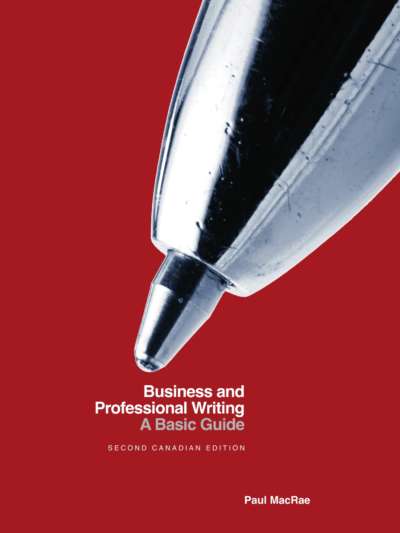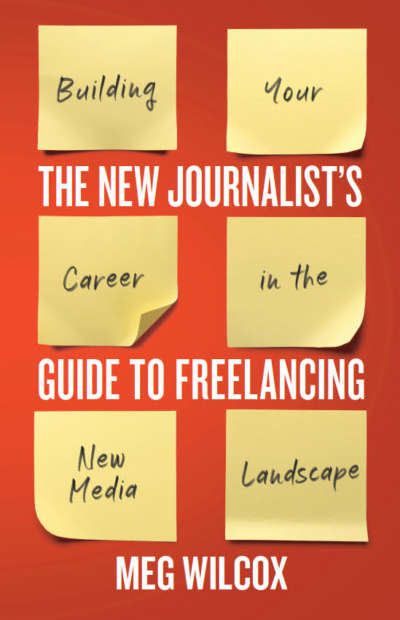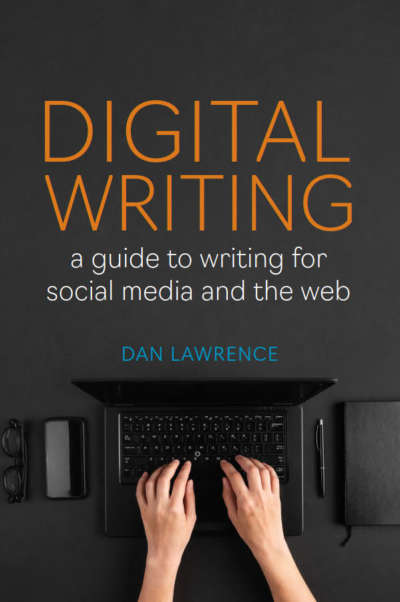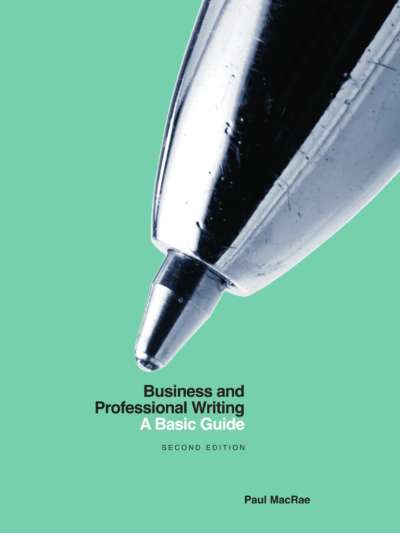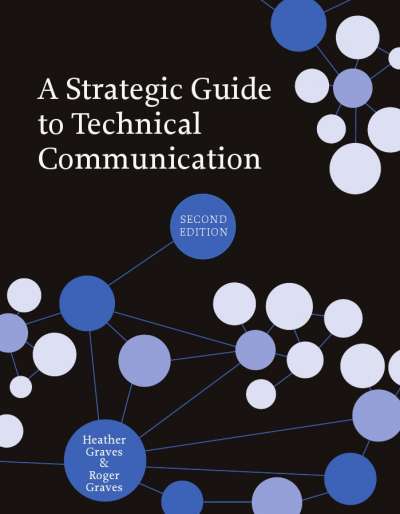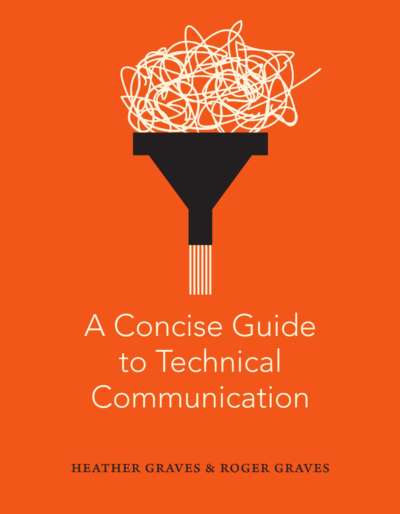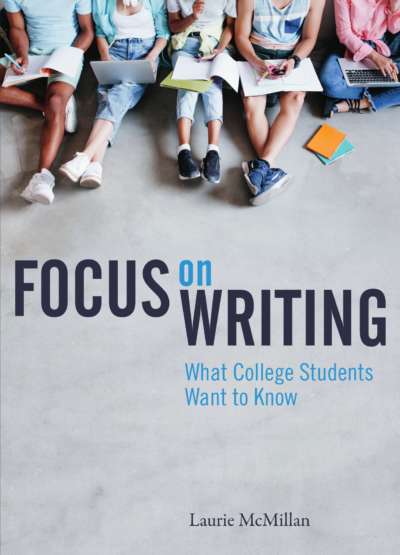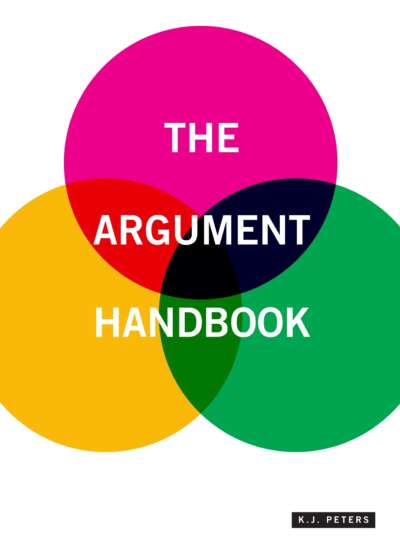Business and professional communication takes place in dynamic, ever-changing contexts. How can we best help students prepare to communicate in such a challenging environment? The traditional pedagogies of the twentieth century—in-class lectures, printed quizzes, and timed exams—have not kept up with new demands for student engagement. Business Communication: Rhetorical Situations supports more interactive and collaborative pedagogies to motivate students.
How is this book different? Each chapter has two or three brief business case-like stories—which the authors call rhetorical situations—that challenge students to apply the business communication concepts they are learning to a specific set of circumstances. These narratives present problems to students that are drawn from real-life communication situations, and they invite students to think through a communication situation and take action.
After each case, challenges and exercises provide more opportunities for students to analyze and reflect on business documents and practice the skills discussed in the case themselves. Throughout, rhetorical concepts such as audience, genre, and purpose are central, and collaboration and creativity are encouraged.
Preface
Chapter 1: Audience, Purpose, and Genre in Business and Professional Communication
- GETTING STARTED
- AUDIENCE IN PROFESSIONAL COMMUNICATION
- Understanding Your Audience
- Readability and Comprehension
- Level of Power or Authority
- Obstacles or Objections to Your Message
- Demographics
- Communication Networks
- Link Your Goals with Readers’ Needs
- How to Organize Your Information in Response to Your Readers’ Viewpoints
- How to Choose Words and Structure Your Sentences to Respond to Your Readers’ Viewpoints
- Analysis: Audience for the BookTime Gift-Card Memo
- Understanding Haylee’s Readers
- PURPOSE IN BUSINESS AND PROFESSIONAL COMMUNICATION
- Motivating Readers to Grant Your Request
- What Motivates Your Readers?
- How Does Your Request Meet Your Readers’ Needs?
- Analysis: Aiming to Keep the Job
- Motivating Readers to Grant Mike’s Request
- BASICS ABOUT GENRE AND GENRE SETS
- Why Should You Know and Use Genre Conventions?
- Analysis: Constructing the EAL Class Announcement
- CHAPTER SUMMARY
Chapter 2: Argument in Professional Communication
- GETTING STARTED
- BASICS OF ARGUMENT
- Credibility
- Basics about Credibility
- Analysis: Improving Dan Cooper’s Credibility
- Logic
- Basics about Logic
- Argument and Values
- The Logic of Your Argument
- Expanding Claims
- Strengthening Your Argument
- Analysis: James Transforms Description into Argument
- James Expands Claims into Arguments
- Emotion
- Basics about Emotional Appeals
- Analysis: Meijing Motivates Readers to Follow the Rules
- CHAPTER SUMMARY
Chapter 3: Style in Business and Professional Writing
- GETTING STARTED
- STYLE IN BUSINESS AND PROFESSIONAL COMMUNICATION
- Plain Language in Professional Documents
- Determine Your Readers’ Needs
- Organize the Information to Respond to Readers’ Needs
- Effective Style in Workplace Writing
- Analysis: Dennis Writes a Summary of the Insurance Policy
- Positive Emphasis and Bad News
- Use Positive Language
- Link Negative Information to a Reason or Reader Motivator
- De-emphasize the Negative and State It Briefly
- Analysis: Returned Eyeglass Frames and Positive Emphasis
- If the Negative Is Trivial, Leave It Out
- Cohesion, Emphasis, and Conciseness in Business and Professional Communication
- Cohesion Strategy 1: Organize the Paragraphs around a Central Topic
- Cohesion Strategy 2: Repeat the Subject Matter from the End of One Sentence at the Beginning of the Next
- Emphasis
- Conciseness
- Analysis: Improving Jayson’s Style
- CHAPTER SUMMARY
Chapter 4: Professional Writing in an Electronic Environment
- GETTING STARTED
- GOOD BUSINESS EMAIL MESSAGES: THE BASICS
- The “To” Line
- The “From” Line
- The “Subject” Line
- The “CC” Line
- The “BCC” Line
- The Message Space
- Attachments
- Analysis: Melania Revisits Her Unsuccessful Recruiting Email
- TONE, LEVELS OF FORMALITY, AND PRIVACY IN ELECTRONIC COMMUNICATION
- Text Messaging and Chat
- Electronic Mail
- Email Is Not Always Private
- Humor Rarely Travels Well Electronically
- Do Not Respond Immediately to an Inflammatory Message
- Use Standard Edited English in Business and Professional Email
- Reread Carefully to Catch Errors before You Send
- Analysis: Creating Excitement among Emma and Bart’s Coworkers
- PUBLISHING ON THE WEB: TWITTER, BLOGS, FACEBOOK, AND LINKEDIN
- Handling Other People’s Private Information
- Writing Online: Principles and Strategies
- Blogs
- Analysis: Planning the C3 Blog Entry
- CHAPTER SUMMARY
Chapter 5: Writing in Teams
- GETTING STARTED
- WORKING AND WRITING IN GROUPS
- Request Knowledge and Opinions
- Offer Information and Opinions
- Summarize
- Review Decisions
- Evaluate Decisions and Ideas
- Coordinate
- MODELS OF COLLABORATION
- Group Behaviors That Create a Successful Collaboration
- Encourage Participation
- Relieve Tension
- Check Feelings
- Solve Interpersonal Problems
- Listen Actively
- Analysis: The Mueller Kent Events Planning Meeting
- What Does the Group Need to Know?
- Group Behaviors That Can Sabotage a Group’s Process and Product
- CONFLICT RESOLUTION
- Four Ways to Deal with Conflict
- CHAPTER SUMMARY
Chapter 6: Communicating across—and within—Cultures
- GETTING STARTED
- COMMUNICATING ACROSS CULTURES
- What Constitutes Another Cultural Group?
- Communicating across Cultures within Canada
- Communicating across Cultures outside North America
- Learning to Communicate across Cultures
- Language
- Politeness, Formality, and Social Interaction Practices
- Oral Communication Practices
- Business Practices
- COMMUNICATING IN A CHANGING WORLD
- CHAPTER SUMMARY
Chapter 7: Positive and Informative Messages: Writing Letters, Memos, and Emails
- GETTING STARTED
- CHOOSING THE MESSAGE TO FIT YOUR SITUATION
- HOW TO WRITE POSITIVE AND INFORMATIVE MESSAGES
- Motivating Your Reader
- Concluding Positive and Informative Messages
- Analysis: Writing a Letter of Congratulations
- INFORMATIVE MESSAGES
- CHAPTER SUMMARY
Chapter 8: Negative Messages: Writing Letters, Memos, and Emails
- GETTING STARTED
- HOW TO WRITE NEGATIVE MESSAGES
- ANALYSIS: ORGANIZATIONAL STATUS AND REFUSING JARED’S REQUEST
- CHAPTER SUMMARY
Chapter 9: Writing Persuasive Messages
- GETTING STARTED
- TYPES OF PERSUASIVE MESSAGES AND HOW TO WRITE THEM
- Overcoming Objections
- Analysis: Argue Moonstone’s Tax Status
- DIAGNOSTIC (OR PROBLEM-SOLVING) PERSUASIVE MESSAGES
- Analysis: Please Use the Cloakroom
- CHAPTER SUMMARY
Chapter 10: Proposals
- GETTING STARTED
- WRITING PERSUASIVE PROPOSALS
- Proposal Writing and Persuasion
- Logic
- Credibility
- Emotional Appeal
- Analysis: DMRE Supports an Active Local Community
- HOW TO WRITE UNSOLICITED PROPOSALS
- FORMATTING A PROPOSAL
- HOW TO WRITE A PROPOSAL IN RESPONSE TO A REQUEST FOR PROPOSALS (RFP)
- Determine What Kind of Proposal Is Requested
- Identify the Evaluation Criteria Outlined in the RFP
- Determine What Information to Include in the Proposal
- Analysis: Formatting a Solicited Proposal
- Questions a Proposal Must Answer
- CHAPTER SUMMARY
Chapter 11: Informal and Interim Reports
- GETTING STARTED
- WHAT ARE ACTIVITY, STATUS, AND PROGRESS REPORTS?
- Content
- Analysis: Martin Aims to Return to Programming
- Purpose
- Audience
- Persuasive Goals
- TRIP REPORTS
- Content
- Analysis: Casey Reports on Her Training Trip
- MEETING REPORTS
- CHAPTER SUMMARY
Chapter 12: Research Reports: Recommendation, Analytical, and Informational
- GETTING STARTED
- GENRES OF THE RESEARCH REPORT
- Formal and Informal Research Reports
- RESEARCH METHODS: SECONDARY SOURCES
- Online Keyword Search
- Analysis: Considering a West-Coast Location
- RESEARCH METHODS: PRIMARY SOURCES
- Interviews
- Surveys
- Dos and Don’ts for Question Writing
- WRITING THE REPORT
- Analyze the Research Results
- Identify Appropriate Evidence
- Draft the Report
- Formats for Research Reports
- Report Section Content
- Formatting Conclusions and Recommendations
- The Languages of the Report Genre
- RESEARCH REPORTS AND OFFICE POLITICS
- CHAPTER SUMMARY
Chapter 13: Design and Visuals in Business and Professional Communication
- GETTING STARTED
- DOCUMENT FORMAT AND DESIGN IN PROFESSIONAL COMMUNICATION
- Basic Components of Document Design
- Use White Space
- Use Headings That Stand Out
- Use Lists to Emphasize Multiple Ideas
- Use Visuals
- Document Formats: Information or Fact Sheet
- Researching and Selecting Document Formats
- USING VISUALS IN BUSINESS AND PROFESSIONAL COMMUNICATION
- How to Choose the Right Visual for a Story
- Conventions for Visuals
- Ethical Use of Visuals
- Techniques for Misleading Presentation of Data
- CHAPTER SUMMARY
Permissions Acknowledgments
Index
Heather Graves is Professor Emerita and Roger Graves is Professor Emeritus of English at the University of Alberta. Their website, wecanwrite.ca, offers resources and materials to support instructors and students
This text has a companion site with resources for instructors. The site provides PowerPoint lectures, chapter overviews, additional business cases, and quizzes for each chapter. An access code to the website is provided in all examination copies.



